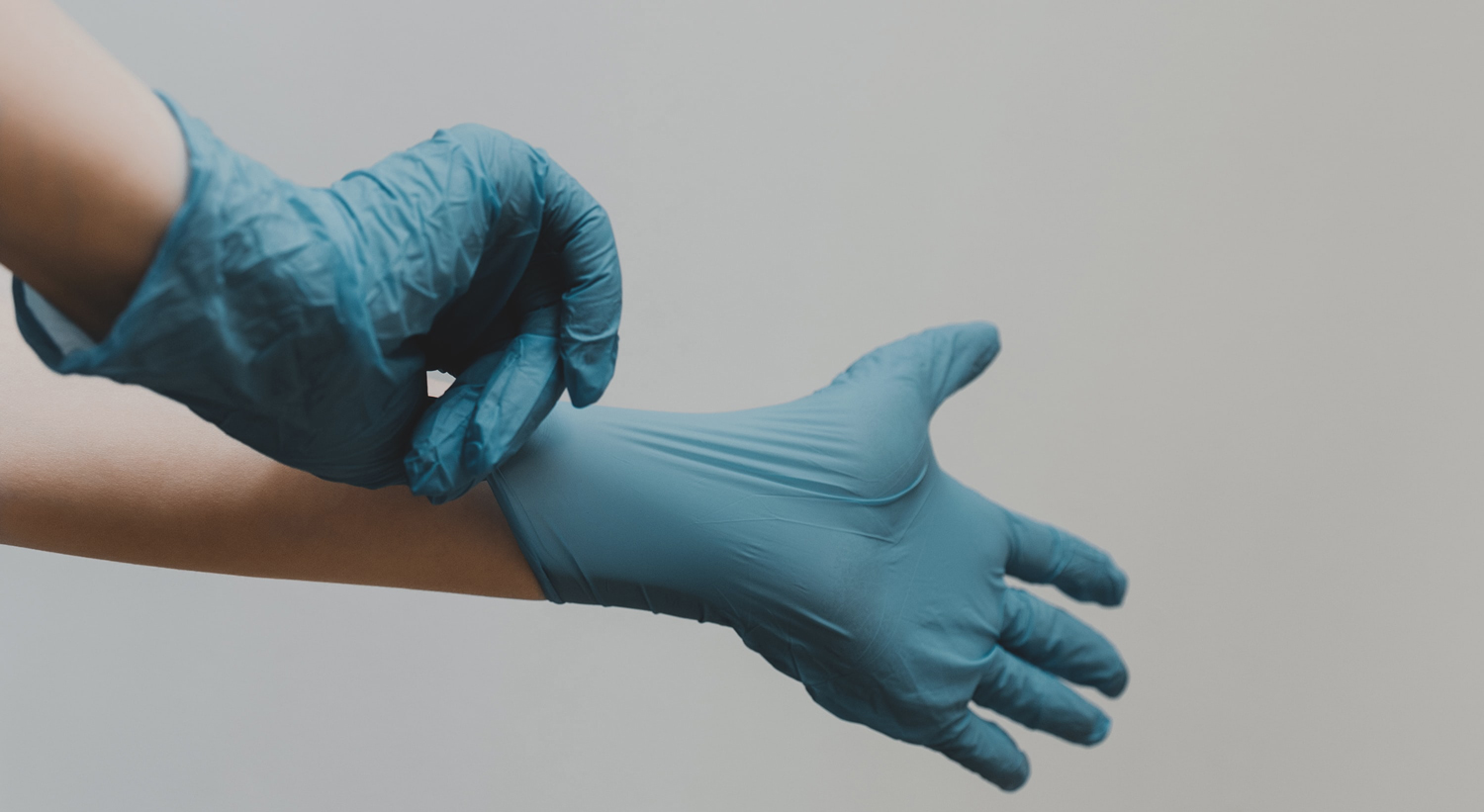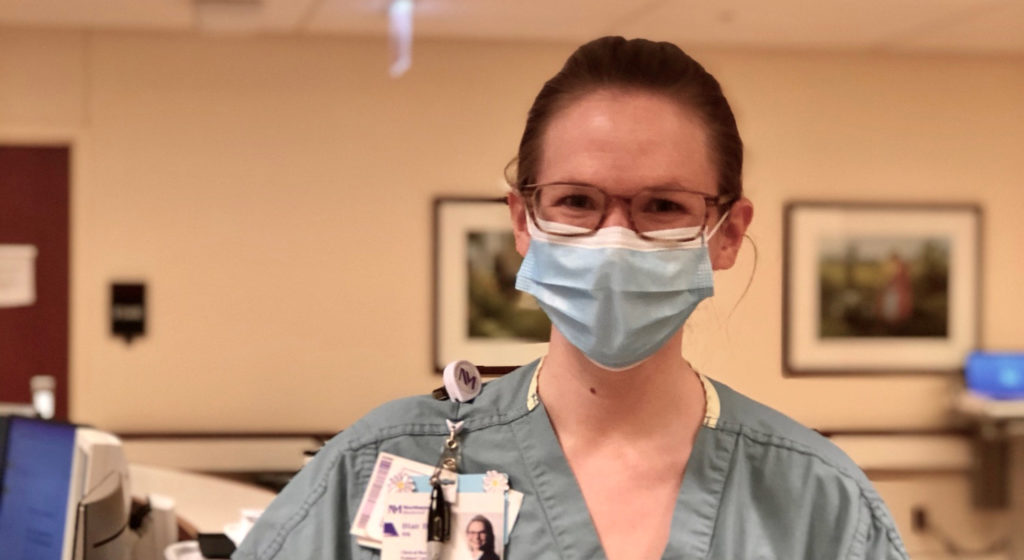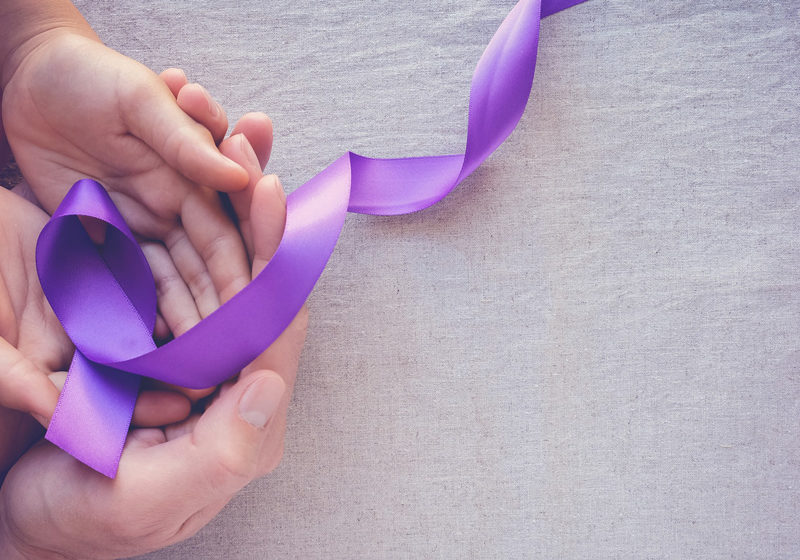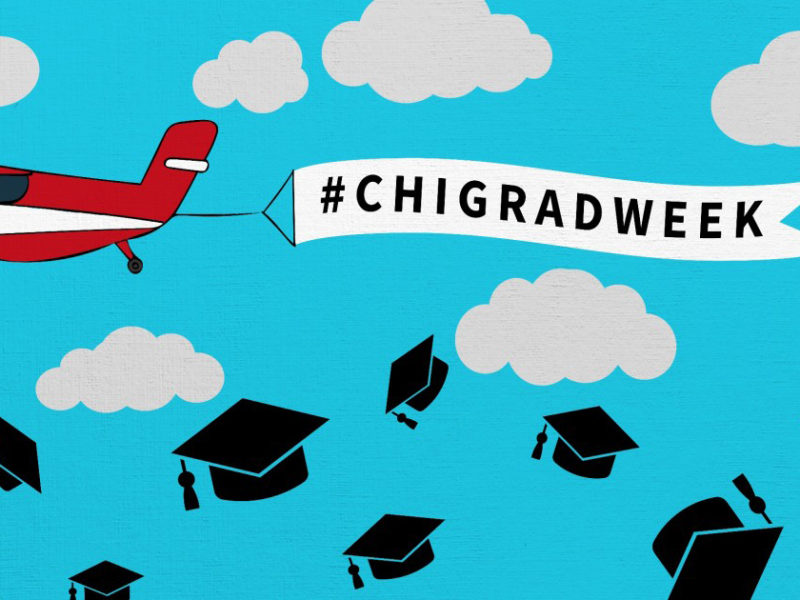
On Chicago’s Front Lines with a COVID Nurse
It’s early. A brisk spring breeze comes in off Lake Michigan. In the east, the sun rises above the blue and orange horizon, casting a soft pink haze on the faces of the gleaming skyscrapers in Streeterville. In the quiet around the Water Tower, the Miracle Mile is wrapped in a blanket of crisp, quiet air.
Blair Bobier walks the desolate streets with her headphones in. This morning, like most mornings lately, she’s listening to “Pink Light,” a song by Muna, a band her friend is in. It brings her comfort.
“It’s just nice listening to “Pink Light” and seeing pink light. There’s a familiarity to it, even though I’m walking into completely unfamiliar territory.”
It’s just before 7am, and Bobier is on her way to Northwestern Memorial Hospital where she will spend the next 12 hours caring for patients who are fighting for their lives against COVID-19.
Transitions
“I’m what they call a second career nurse.”
Bobier wasn’t always a nurse. Before making the transition to healthcare, she studied ethics, pursuing an MA at the University of Chicago Divinity School. But when she turned 26, she decided to make a change.
She liked science, she liked critical thinking, and she liked interacting with people. After considering different kinds of work she could do as a nurse in the medical field, she settled on oncology, working with patients receiving stem cell transplants.
“They’re there for so long that you get to know them really well,” Bobier says. ”You get to know their families and their complex situations.”
And for 14 months, that’s what she did.
Then the coronavirus came and everything changed. Near the end of February, it became clear that the hospital would need to make radical adjustments to prepare for a mounting global health crisis of unprecedented proportions. Northwestern Memorial made the move to convert an entire floor for treating COVID-19 patients, and they went about recruiting people to staff it. Bobier’s manager reached out to nurses on the oncology floor seeking volunteers.
“I took him up on it in part because I knew I probably would be working with COVID patients at some point anyway, but I also felt more comfortable with the idea of walking into it prepared ahead of time.”
Bobier put her name forward, and on March 23, soon after the shelter-in-place orders ushered in a new normal across the city, she went into work for her first shift as an official COVID Nurse.
“Who would take out the trash”
The day started with anxiety. The news abounded with stories of mounting infections in New York, death rates exploding in Italy, nurses and doctors succumbing to a disease they seemed powerless to fight. Reports of equipment shortages had gripped the medical industry. And no one was sure how to even fight the virus in the first place.
The day started with an educational campaign. Nurses—most of whom had never worked in any conditions like this before—were instructed in the proper use of personal protective equipment (PPE), taught a whole slate of new precautionary procedures, and informed about new protocol for responding to changes in patient conditions. Everything was being done to protect healthcare workers and other patients from each other. The goal was zero transference of the virus from one host to another.
“That was very reassuring to me and also to my family, that these things were really being thought about and that these weren’t precautions I had to fight for. They were already in place for me.”
In order to accomplish this, though, the typical procedures were thrown out the window. The hospital wanted as few people interacting with patients as possible. It would be doctors and nurses only. That meant everything from checking vitals to changing bedding would done by nurses. Nurses were going to take out the trash from patients’ rooms.
“Before this, it didn’t occur to me to think about who would take out the trash.”
At first, a lack of testing made all of this preventive work infinitely more important. Without proper testing, some patients could end up on the floor who didn’t even have the coronavirus, and be unwittingly exposed to it by another patient, nurse, or doctor. Nurses worked in buddy systems to help each other preserve their equipment (to mitigate the wasting of precious resources) while also keeping the networks of contact to a minimum. Not anyone could help you change—only your buddy could. One point of contact.
Even patients were joining The Battle of Zero Transmissions. While the doors to the patients’ rooms were kept close so that they could sit in bed without a mask on, some insisted on wearing a mask around nurses and doctors anyway, just so they wouldn’t transmit the virus.
“They’re just so mindful of that. We’re at risk, and they’re grateful that we’re there and they don’t want to contribute anything that would put us at risk.”
Transmitting the virus is a core anxiety of everyone at the moment, but this is particularly true for workers and patients on the front line. Bobier is married and lives with her husband, and while she has become accustomed to her new level of exposure, she struggled with it at first. In order to limit her network of exposure, she has stopped visiting her mother, who only lives 20 minutes away.
“It was harder at first. It comes and goes, especially now that I don’t know what the end of this looks like. I don’t know the timeline.
“Obviously it’s good that they flatten the curve. But part of flattening that curve means extending it. It is hard when you don’t have answers about when life can be normal again. I can’t have lunch with my mom, which I might usually do after a tough day at work.”
And some days at work are tough. Projections for when things will slow down continue to be pushed. Bobier works on a floor that treats people in the early stages of the illness, before they are transferred to the ICU—if it ever even gets that far. But despite the fact that they transfer people at the very first signs of trouble, what people have learned about COVID-19 is that it moves fast. It burrows deep into the lungs and wreaks havoc with breathtaking speed and ferocity.
The Numbers Aren’t Right
The temperature is rising.
One of Bobier’s patients is running a fever, and he has been all day. He has a high respiratory rate. His breathing is labored. At the same time, he’s alert. He talks jovially, heavy breaths punctuating his responses. Bobier checks his vitals. His oxygen levels are good. Numbers wise, everything looks perfect. But it’s clear that he’s working hard to breath and that he won’t be able to keep this up for long.
Bobier, and other nurses on the floor, are trained to act quickly and decisively. What medical professionals around the globe have learned is that COVID waits for no one. The usual protocol is insufficient. The old rules no longer apply. An hour with the wrong treatment can be the difference between life and death. So, despite numbers that otherwise wouldn’t raise any alarms, the patient’s breathing puts Bobier on guard and pushes her to make a difficult choice. Together with a doctor, they a rapid response team is called in.
They immediately bring up a respiratory therapist, who begins transitioning the patient, scared and confused, to the ICU. They tell him they’re bringing him there to keep a better eye on him, even if it’s just for 24 hours.
“I actually, I expected him to come back from the ICU pretty quickly, but I learned he was then put on a ventilator. Last I heard he was still on a ventilator, but I’m not sure if that’s still the case. It’s very possible he’s still on a ventilator. It’s possible he’s recovering at home now. It’s also possible he’s passed away. I’ll probably never know. That’s probably the hardest thing about this situation—not knowing.”
This was particularly hard for Bobier. This patient was young, younger than her. He didn’t have any comorbidities. He was a healthy young person, so far from the image people had concocted about who was most at risk from this disease.
“The message out there is, stay at home so that you’ll save your grandma. But the message really needs to be that these young people are at risk, and we’re seeing that more and more. I think that gets hidden a little bit in mortality rates. You don’t want to see anyone die or be sick, but it’s especially jarring when it’s someone who isn’t typically in that situation.”
Lending a Hand
The internal machinations of hospitals have never looked like this before.
For the time being, hospitals aren’t allowing any visitors whatsoever. For COVID patients, this means navigating the unknown without the support of friends and family. But this is also the case for everyone else in the hospital who suffer from other ailments. On the oncology floor, where Bobier usually works, most of the patients have been sent home. Some, however, are still there. Their treatment couldn’t be pushed off any longer.
“It’s really brutal, especially if you’re in the hospital for cancer and you can’t have anyone with you. It puts a lot on the nurse. Just because I’m on the “front lines” doesn’t necessarily mean it’s that much harder than some other people. People are going through a lot, even nurses and other healthcare workers who are working on non-COVID floors.”
The gravity of the moment permeates the hospital from top to bottom. Everyone lends a hand. The pressure on healthcare workers has never been as intense as it is these days, but at the same time, the spirit of solidarity has never been so abundantly shared. Bobier’s manager checks in on her regularly. Nurses who have never worked together are lining up to work side-by-side, fostering new bonds and communicating in a code forged by the collective confrontation of a crisis unlike any they’ve ever seen.
“People aren’t saying no. If you need help, people are helping you figure it out. People I’ve never worked with. There’s a real sense of comradery that I haven’t seen before.”
That comradery gives Bobier a sense of gratitude and purpose. It settles her and puts everything into perspective. It makes it manageable. When the evening comes, and the clock strikes 7:30, Bobier is done for the day.
She walks home through the empty streets of Streeterville, streets that would otherwise be bustling with tourists, businesspeople, hospital visitors. By the time she gets to the 8th floor of her building, the 8 o’clock cheers crescendos through the canyons between the buildings; the moment binds everyone together.
“It doesn’t last very long, but it’s just a nice reminder that we’ve made a choice to spend that moment together in a way that we can.”
And when that moment is over, life goes back to something like normal. Bobier spends time with her husband, relaxes. She decompresses, watches a movie, turns off her phone. She doesn’t go on and on about her day, as she did when the crisis first started. Now, she journals. She writes it down.
“I feel like I need to record this, not only my own life, but just this piece of history. Because I don’t intend to do anything like this again.”






Susan
Blair
You do not know me but I am a friend of your mother-in-law, Jann. How beautifully written, reflective and personal is your blog. I applaud you and your healthcare colleagues for all the work you are doing to help save people’s lives and provide care for all the victims of this heinous disease. I wish you continued strength, conviction, and support as you work through this new reality. I hope to meet you some day and give you a hug for all that you are doing.
Susan Hase
Phyllis Thomas
Blair,
What an inspirational piece you have written. This is amazing to read. I know how proud your family is of what you are doing. Those of us who are friends of your family are equally proud, thrilled and frightened by the frontline work you are doing. All of your education and experiences have come together to have you at the right place, at the right moment – truly making a difference.
Love to you and Dan,
Phyllis